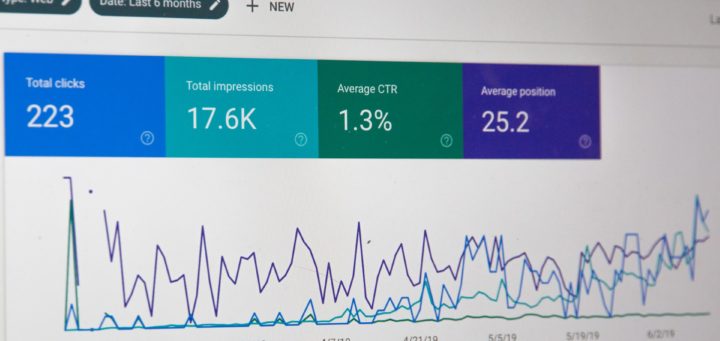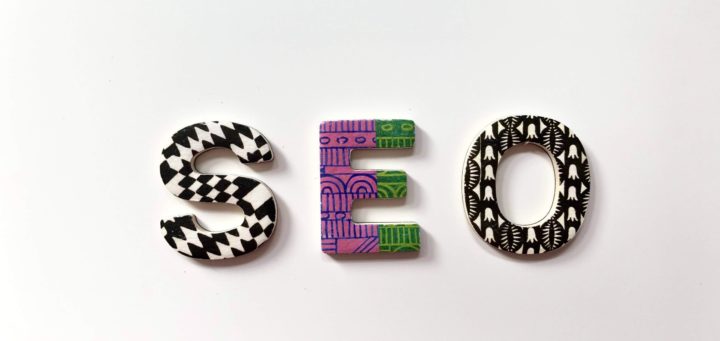8 SEO Mistakes To Avoid Right Now (And Forever)
You’re a smart cookie – you know your web presence and SEO is a significant contributor to your business success. Especially given the fact that most people are working from home, shopping from home and scrolling (please watch ‘The Social Dilemma’) from home, you know that a business goal of yours is to increase your presence online – SEO specifically – all the time.
By now you likely understand that knowing where you land on SERP (search engine results pages) is very, very important too. For prospects looking for the services you offer or insights you deliver, if you rank at the top of SERP that cold lead is far, far more likely to turn warm then if you’re on the bottom or (gasp) the second page of results. So, what difference do the first, second, and third spots on SERP matter? Websites on the top get 42% of the traffic; the second gets 11% and the third only gets 8% – Do you even want to know what your traffic looks like at the bottom or second page? Me neither.
Your SEO matters and these are ‘8 Mistakes To Avoid Right Now’ to ensure you reach the top and stay there.
1. Unsatisfied search intent
You know your target audience, right? We hope you do – it would be weird if your business sold oranges but your website content was apple based. That’s a pretty basic comparison but it leads us to our point – your content should be correctly and strategically optimized so that your target audience a.) finds it, and b.) finds it useful.
Search intent is what your audience is looking for when they search for a term in Google, Bing or any other search engine.
It’s the difference between ‘Apple Pie Stores‘ and ‘Apple Pie Recipes‘ – One search intent is for a service, one is for information. The key is to know what your audience wants and is searching for, how it relates to your specific service or product, and optimizing your SEO for that specific intent.
Once you understand what your audience’s search intent is, you can target keywords that are relevant to them, and that offers a solution to their needs.
2. Ignoring or Unawareness of Web Changes
SEO best practices are constantly changing and it’s no wonder why – the world is constantly changing, and subsequently the technology that serves us as well. Google is constantly updating their products, search engines, and algorithms to provide users with safer, more accurate, and personalized results.
As a result, we as marketers need to know when these updates are released, what they mean for our website and how they might affect our web traffic results.
Adding google updates or following leaders in the space in your RSS feed can be really beneficial in ensuring your on top of big changes – It can also serve you in sales calls with prospects, as you’ll be a point of authority with a strong understanding of industry changes and trends.
If you haven’t updated yourself on new changes here’s a great starting point we wrote for Google updates to be aware of.
3. Not Updating Your SEO Techniques
Just as Google is constantly updating their products to keep up with the changing world – so should your SEO techniques. Even if your website is only a year old there are always new ways to tweak your SEO strategy to better align with Google and other search engine updates.
Traditional SEO is not only antiquated, but it can also be detrimental to your performance in search engine results pages.
Links for the sake of links (Public Blog Networks – looking at you), keyword stuffing or replicated, un-customized title tags won’t help you to rank better by web crawlers and algorithms, and not only that – they come off as lazy, confusing, and unappealing to your audience.
Google is getting better at understanding what users are looking for and connecting search results based on the relations each word in a user’s search has to the ones preceding and following it. This makes it easier for users to find the solution that you are providing, but also changes strategies for your SEO by understanding how Google might interpret your keywords and web content.
4. People > Search Engines
While we’ve talked about keeping up with new SEO techniques and updates to Google and other search engine’s algorithmic changes – we can’t stress the importance of creating content and basing your SEO efforts around solving problems for your people and not JUST appeasing the search engine gods.
So while Google is trying to humanize it’s algorithm with Google BERT, you too should be making sure that your content and your SEO practices are designed to make it easy for your customers to understand what the purpose of each page is – without feeling like your cramming a million keywords in their face.
Finding the way to best ways to communicate your value to your customers always supersedes appeasing search engines.
While we love search engines and geek out on new SEO strategies, we are very aware (as you should be too) that the technology can fail us – something might happen with a automated moderator on Googles side that might drop your site into the 2nd-page depths of SERP – but building audience trust, engagement, and loyalty will lead to something integral and invaluable – word of mouth marketing. Bonus points if they like you and organically link your site, products, and business on their own pages – that’s SEO equity you can’t rank for 😉

Image Credit: iMattSmart on Unsplash
5. Ignoring Video Content
If you’re just focusing on writing content, you’re leaving a lot on the table. Have you noticed that videos are showing up in Google searches more often than not? It’s no coincidence.
Videos take less time to rank on Google than text content. Read that again. It shouldn’t surprise you, everyone puts written content online, but only a few of your competitors do, and if you’re one of them, you’re likely in great company – right at the top.
We’ve explained previously how one piece of video content can provide multiple posts across several platforms online, but it’s worth a repeat. We’re lazy in nature – we prefer watching than reading, and video is an easier medium to absorb and learn from. Google knows this, and now you do too!
Robots are the future – but video is the future right now.
6. Not Optimizing For Mobile
Let me paint a picture, I’m sitting at my work from home set up right now. I realize I want to hire a mover because I’m moving in a week. I’m on my laptop. I pick up my phone to search for a mover. Have you ever done this? I do it several times a day. Reach for my phone despite being on my computer.
The point being, people reach for their smartphones out of habit. Search engines know this and if your site is even a little bit under-optimized, your web traffic will suffer. I’ve certainly left a website from my smartphone because it didn’t scale appropriately, content was lost or hard to locate, or the site wasn’t loading fast enough.
Nearly 50% of all traffic comes from mobiles, so it pays in spades to be ready for that traffic. Visit your website on your phone, check for video playback, see if there’s video or photo alt tags that you’ve missed, or back up imagery that shows if the devices don’t support video playback.
Build for mobile and keep a keen eye on page speed – it will serve you in the long run.
7. Not Using Anchor Text for Internal Links
You know that links are a great way to get people to explore your website. They might find your blog post, and come to realize they’ve also actually been meaning to look into the different conversions they should be tracking in Google Ads, and it just happens to be something you’ve also covered!
People love to know where they’ll be headed if they click a link – and it provides a good opportunity for you to exercise a little bit of SEO strategy. The above link is a lot more naturally flowing then telling you to check out our post where we go in-depth into Google Ad conversions here. And, as we mentioned previously in this post, you should always aim to please your readers before search engines.
Customizing anchor text reads better, offers an opportunity to add keywords that serve your overall SEO strategy and looks so much better than no anchor text at all.
8. Unclear SEO goals & Impatience
You need clear goals for your SEO strategy. The saying “You can’t manage what you can’t measure” applies here. If you don’t know what you want from your strategy, chances are you won’t achieve it.
Once you find out your goals and build your strategy, be patient. Monitor closely, and audit often, but SEO results do not happen overnight, changes and optimization take time to index and provide the organic results you want.
Conclusion
Hopefully, these tips might shine a light into some potential blind spots that your team might be overlooking. There’s a lot going on in the world and certainly a lot to be worried about and we hope with this list of 8 SEO Mistakes to Avoid, youre web presence strategy isn’t one of them.
photo credit Merakist, Unsplash.


